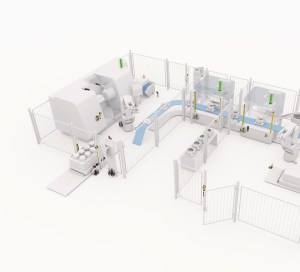
By now we’ve all heard of IO-Link, the device-level communication protocol that seems magical. Often referred to as the “USB of industrial automation,” IO-Link is a universal, open, and bi-directional communication technology that enables plug-and-play device replacement, dynamic device configuration, centralized device management, remote parameter setting, device level diagnostics, and uses existing sensor cabling as part of the IEC standard accepted worldwide.
But what makes IO-Link magical?
If the list above doesn’t convince you to consider using IO-Link on your next automation project, let me tell you more about the things that matter beyond its function as a communications protocol.
Even though these benefits are very nice, none of them mean anything if the devices connected to the network don’t provide meaningful, relevant, and accurate data for your application.
Evolution of the IO-Link
IO-Link devices, also known as “smart devices,” have evolved significantly over the years. At first, they were very simple and basic, providing data such as the status of your inputs and outputs and maybe giving you the ability to configure a few basic parameters, such as port assignment as an input or an output digitally over IO-Link. Next, came the addition of functions that would improve the diagnostics and troubleshooting of the device. Multi-functionality followed, where you have one device under one part number, and can configure it in multiple modes of operation.
Nothing, however, affected the development of smart devices as much as the introduction of IIoT (Industrial Internet of Things) and the demand for more real-time information about the status of your machine, production line, and production plant starting at a device level. This demand drove the development of smart devices with added features and benefits that are outside of their primary functions.
Condition monitoring
IO-Link supplies both sensor/actuator details and secure information
One of the most valuable added features, for example, is condition monitoring. Information such as vibration, humidity, pressure, voltage and current load, and inclination – in addition to device primary function data – is invaluable to determine the health of your machine, thus the health of your production line or plant.
IO-Link offers the flexibility to create a controls architecture independent of PLC manufacturer or higher-level communications protocols. It enables you to:
- use existing low-cost sensor cabling
- enhance your existing controls architecture by adding devices such as RFID readers, barcode and identification vision sensors, linear and pressure transducers, process sensors, discrete or analog I/O, HMI devices, pneumatic and electro-mechanical actuators, condition monitoring, etc.
- dynamically change the device configuration, auto-configure devices upon startup, and plug-and-play replacement of devices
- enable IIOT, predictive maintenance, machine learning, and artificial intelligence
There is no other device-level communications protocol that provides as many features and benefits and is cost-effective and robust enough for industrial automation applications as IO-Link.

